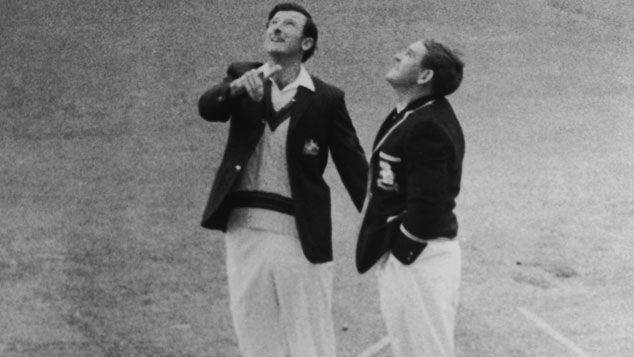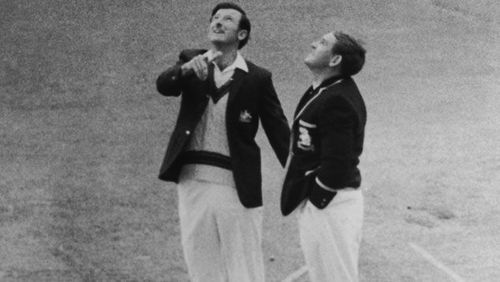
The ‘Quality’ of an ODI Batsman

5th January 1971 was the day of the first ODI between Australia and England at the Melbourne Cricket Ground. After thousands of ODIs with more than hundreds of batsmen having played this format, is it possible to answer as to who is the greatest ODI batsman ever? The answer to this question will vary from generation to generation. After every 4-5 years, there are changes in the rules and regulations of the one-day format. In the early 2000s, anything above 240 would be a great score.
Nowadays even 350 is chased down easily by teams. Earlier there used to be powerplay overs which the batting team had to choose. Now the Powerplay overs are already decided. The new rule of having only 4 fielders outside the circle from overs 11 to 40 has made run-making really easy. Reverse-swing has completely gone out of the 50 over format due to the two new-balls theory. With all these things favoring the batsmen, the question bowlers would be asking is that has the game ever been so easy for the batsmen?
This analysis is purely based on stats and when you check out the stats for the batsmen of this generation and the older generation we find a clear difference. The batsmen of the latter don’t have the higher strike rates as compared to the former. In this analysis, most of the batsmen at the top are the modern-day players. So without wasting time let’s start the analysis.
In this analysis, a new factor has been introduced which is the Quality Factor(QF). It uses a variety of parameters to calculate the QF of a batsman. The batsmen with the greatest QF are said to be best in this format.
Parameters used for Calculating the QF:
#1 Average
Irrespective of the format, the average is the most important factor while analyzing any batsman. More often than not average will give a clear idea as to how consistent a batsman you are.

These are the top 5 players with the highest average. But are these the ones with the highest QF? We will soon find out at the end of our analysis.
#2 Strike-rate
In today’s age, there is a competition as to which parameter is more important – average or strike rate. Are you effective if you score only 30 off 15 balls or 80 off 85 balls? Even though it depends on the situation, the player who is capable of the latter will be preferred in the ODI format. But in the shortest format, the situation will be reversed. In T20s, a batsman with a higher strike-rate may be preferred over a higher average one. So the strike-rate is given utmost importance while calculating the QF.

All these players are modern-day aggressive batsmen. Most of these are impact players and can create an impact pretty quickly. But does that impact last long enough? Only AB De Villiers averages above 50. So most of the times a batsman having a higher strike-rate sacrifice his average. Only a few can keep up with both the parameters.
#3 Innings per 50+ Score
While analyzing you need to finalize one score as a par score, so in this analysis, that score is a 50+ score. A 50+ score is a benchmark. The innings per 50+ score is inversely proportional to the factor. So if a batsman scores 50+ consistently his QF will be greater. You can argue at times, that the batsmen don’t have enough time to score a 50.
But that is the case with any score you would consider. Even if you change the parameter to a 30+ score, you can say the same thing and a batsman is well set at 30, so you expect him to make it big and score more than 50!

All these 5 batsmen average well above 45 whereas Kohli, Root and Trott average above 50. If you look at the numbers closely, Kohli scores a 50+ score every 2.46 innings which shows his consistency. Most of these batsmen have all their parameters up there with the rest and hence will make the Top 10 pretty easily.
Quality Factor (QF)
Using the three parameters – average, strike-rate and innings per 50+ score finally the Quality Factor is calculated. For a batsman, these three parameters are the most important to determine the Quality of a batsman in the ODI format.

These are the Top 10 batsmen with the highest QFs. Virat Kohli leads the chart with the highest QF of 23.21. Mr.360 is not much behind with a QF of 19.35. The next four are in a tough competition and anyone (except Trott) could go ahead at any stage. 7 out of the 10 batsmen are still pretty much playing the game. AB de Villiers too has retired just a few months back.
The only player who batted way ahead of the time was the great – Sir Vivian Richards. He is 8th on the list with a QF of 14.21. But the level of consistency shown by Virat Kohli is unbeatable and that’s the reason why he is leading the chart with the highest QF! He has a mind-boggling average, more than a decent strike-rate and the number of innings which he takes to score a 50+ score too is the lowest.
For the time being, the answer to the all-time greatest batsmen might remain unanswered due to a lot of differences in the rules and regulations. But talking about the current crop, King Kohli is well above the rest in this format. It would be safe to say that he has mastered this format to perfection.